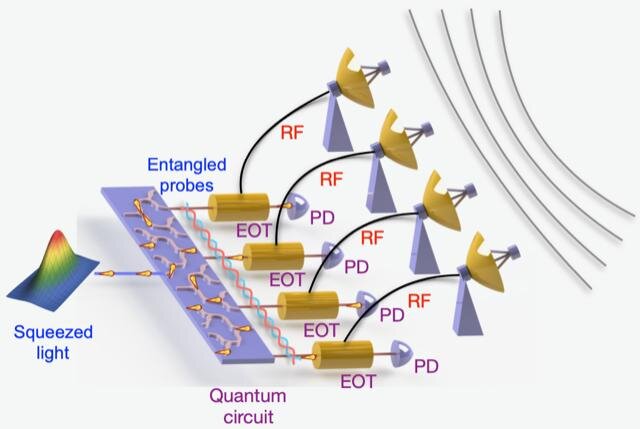
University of Arizona engineering and optical sciences researchers, in collaboration with engineers from General Dynamics Mission Systems, demonstrate how a combination of two techniques (radio frequency photonics sensing and quantum metrology) can give sensor networks a previously unheard-of level of precision. The work involves transferring information from electrons to photons, then using quantum entanglement to increase the photons’ sensing capabilities.
Because optical signals offer so many advantages, the researchers used an electro-optical transducer to convert RF waves into the optical domain in a method called RF-photonics sensing.
After converting information to the optical domain, the researchers applied a technique called quantum metrology. Usually, a sensor’s precision is limited by something called the standard quantum limit. For example, smartphone GPS systems are usually accurate within a 16-foot radius. Quantum metrology uses entangled particles to break past the standard quantum limit and take ultra-sensitive measurements. (Phys.org)
The work has been published in Physical Review Letters.
